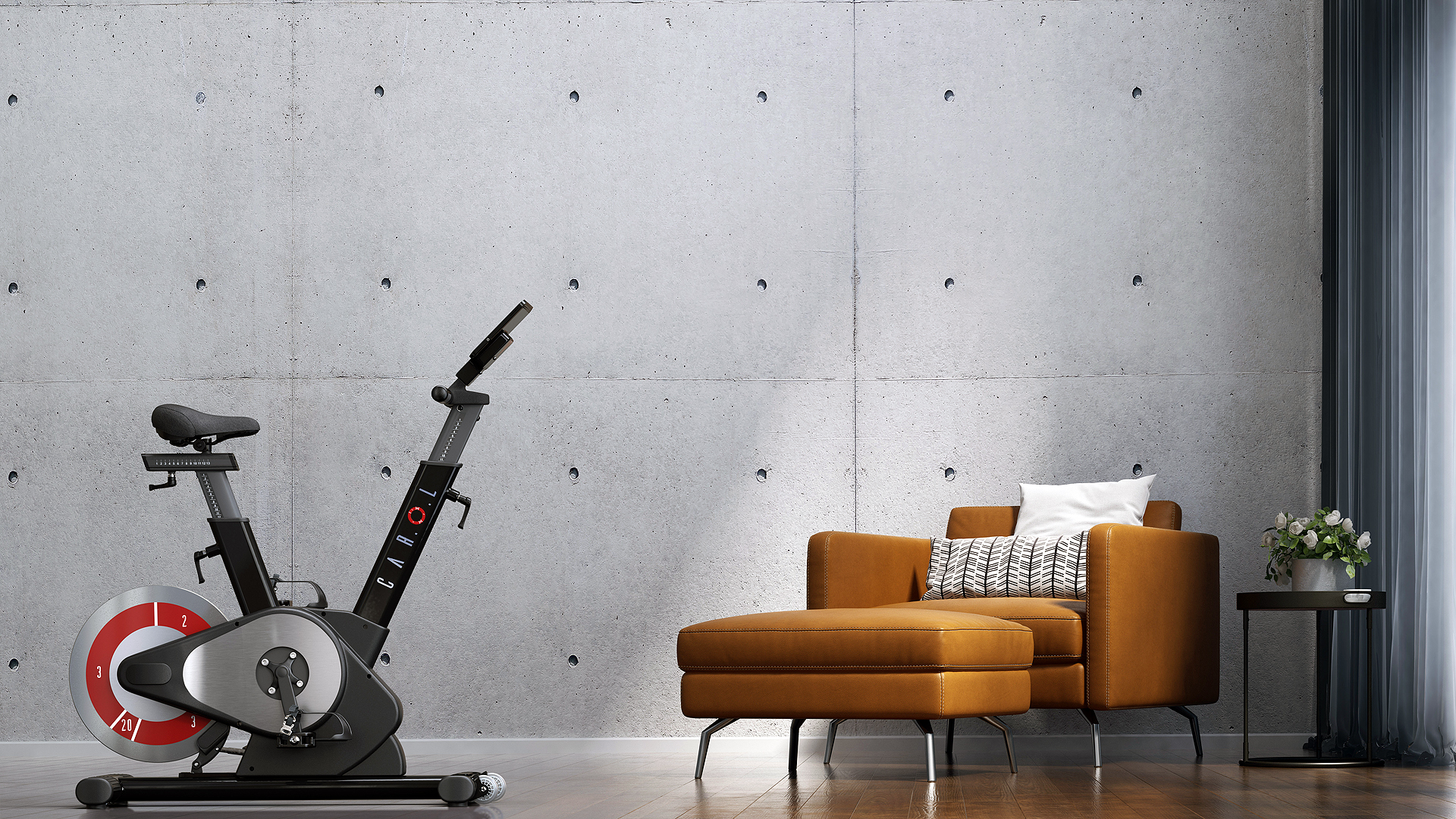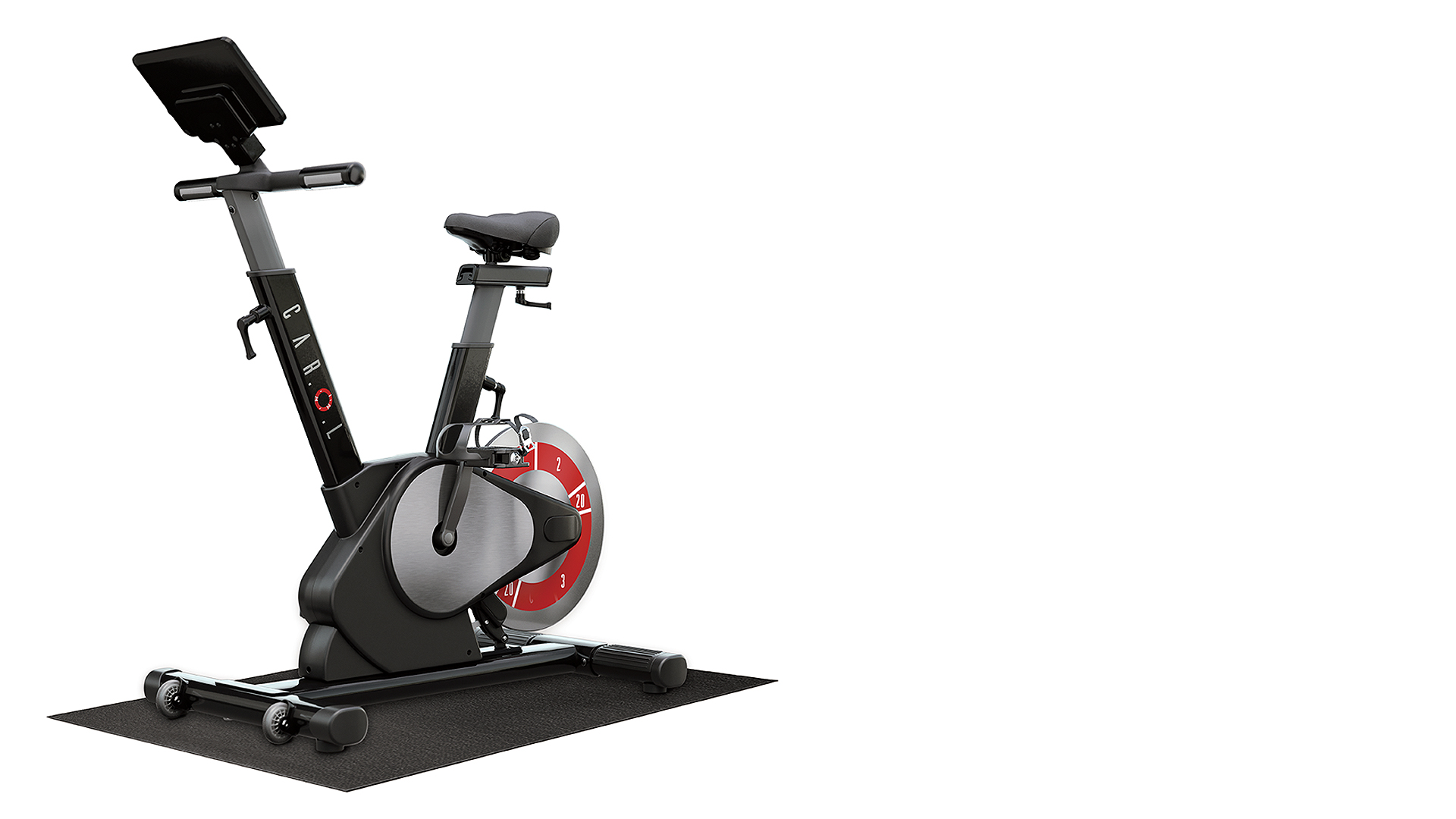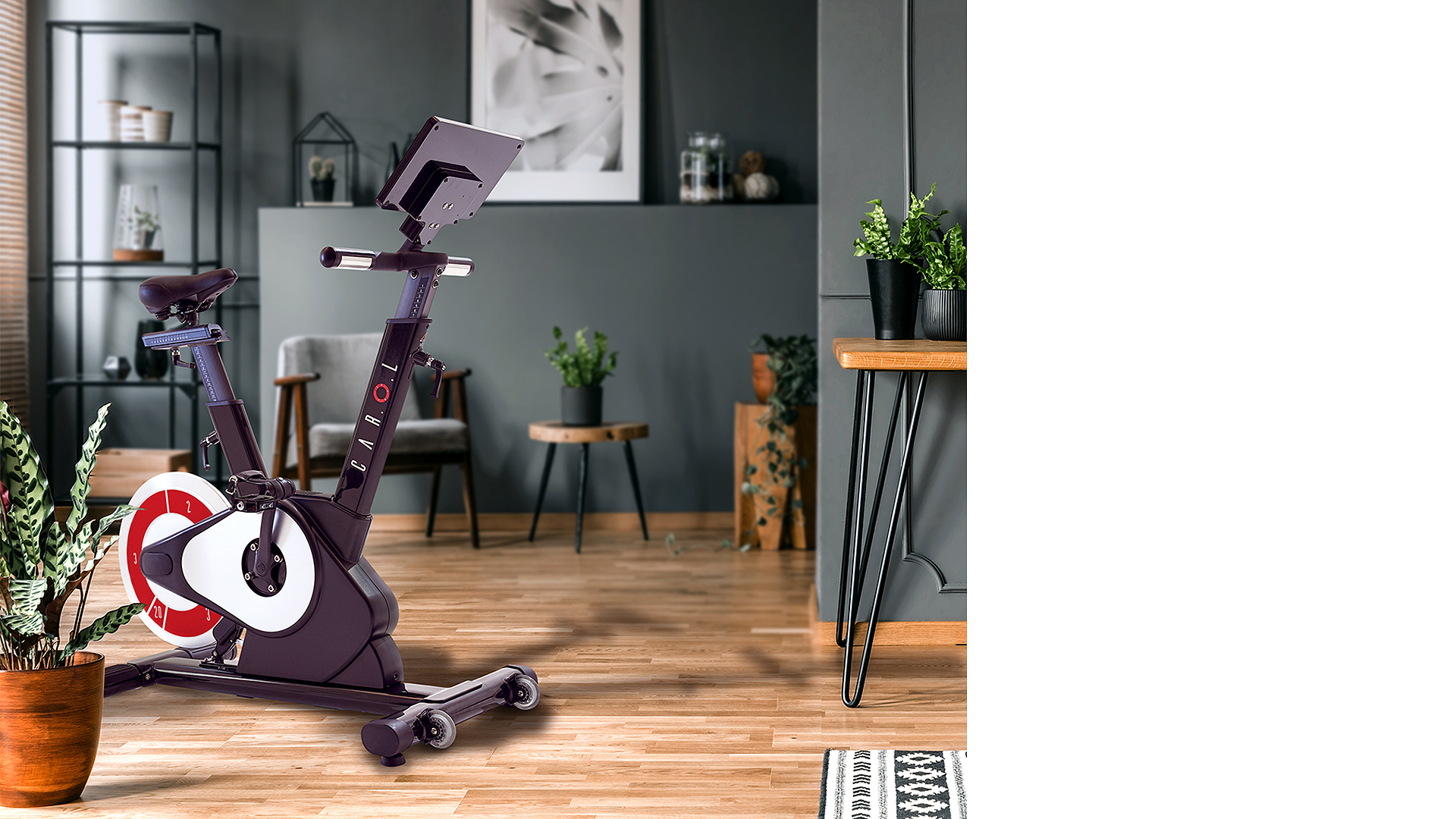

CAROL is not like other exercise bikes. Using clever software and high-class engineering, it takes an approach to getting you in shape that is different to any other device I can think of. It’s not so much high-intensity interval training – HIIT – as very very very high-intensity interval training. VVVHIIT.
With the market-dominating likes of Peloton in the world, why would you buy an exercise bike named Carol? Or, strictly speaking, CAROL (it's an acronym). The answer might surprise you. We're all busy, so let's cut to the chase. What would you say if I asked if you'd like to get in better shape and reduce your risk of several very nasty ailments with just under 10 minutes of exercise per day?
I expect you'd say, "That sounds very interesting, Duncan, but it does sound a bit too good to be true." Well, there's more. What if I told you the amount of time involved is actually 8 minutes and 40 seconds, and of that time, you are only making any effort for 40 seconds? Quite possibly, you may reply, "Yeah, okay, Duncan, that just sounds like bollocks. Can you get out of my house now, please?"
However, you would be bang wrong, my friend, so don't take that tone with me. I tried CAROL for a month. While I wouldn't claim it changed my life, both the effects, I felt from those 40 seconds per day, and the research data done by others, suggest it really does work.
It’s worth noting that CAROL also provides more standard workouts of the type you can get from any exercise bike. There’s even talk of Zwift support being added soon. However, for the purposes of this review, I focussed very much on the core CAROL selling point of getting you fit with very short bursts of intense exercise. We’ll have a fuller review soon that takes more of an overview.
[PLEASE NOTE: There is a newer version of the bike available in the US (coming soon to the UK); however, this review focuses on the original CAROL Bike.]

How does the CAROL Bike work?
CAROL looks like a standard, if premium, exercise bike. First impressions are: it's got a built-in Android tablet – nice – it's sturdily built – excellent – there's no water bottle holder – what, are you insane?!
Get all the latest news, reviews, deals and buying guides on gorgeous tech, home and active products from the T3 experts
Once you get over the shock of a high-end exercise bike in 2021 lacking a water bottle holder, you begin to notice the things that make CAROL different. Firstly, it's not just sturdily built; it's like a two-wheeled battleship. It's certified for 'professional and commercial use', while Peloton+ – which is by no means flimsy – is only meant for 'domestic' use.
This build quality is crucial, because the aforementioned 40 seconds of effort when using it in standard mode really is a LOT of effort.
You pedal s-l-o-o-o-o-w-l-y for 2 minutes, while on-screen prompts encourage you to breathe 'mindfully'. I have to say, I always found this section quite annoying – not least because the prompts are always the same. However, it is very necessary. Then there is a countdown, before you are expected to pedal flat out for 20 seconds. Oh, and not only do you have to go as fast as you can, you have to do so while CAROL whacks the resistance up from almost nothing to excruciatingly high levels, in the blink of an eye.
Now, if you think 20 seconds is a short space of time, well… it usually is. However the 20 seconds of effort on a CAROL bike feel very long indeed. I could generally build enough momentum to feel like I was beating the resistance for about the first 5-10 seconds but by 20 I was practically cycling backwards. You really do hit 'the wall' with CAROL.

You then return to slow mode for 3 minutes. This time, if you're anything like me, you will not be able to breathe all that 'mindfully', because you will be spluttering and gasping for air for approximately two thirds of this recovery phase.
Next, you guessed it, 20 more seconds of Hell. Then have a two-minute warm-down and collect your results. In my case, this was nearly always, 'You've done great, so we'll make it harder next time'. To which the obvious response is 'Oh great, thanks a lot.'
There are two really clever things about CAROL. One is that ability to whack up the resistance from nothing to 'Oh My God' in milliseconds. It's possible you could replicate this on a Wattbike or Wahoo KICKR, but I don't think so.
The other really clever thing is the way it assesses and responds to your personal fitness level. As you probably guessed, CAROL stands for 'Cardiovascular Optimisation Logic'. Well, it's obvious isn't it? What this means is that CAROL uses the heart rate monitor built in to the handlebars and a clever algorithm to work out how fit you are. It then very precisely applies resistance, based on your fitness level. As a result, your heart is pushed as hard as possible without actually exploding.
Firstly, six shorter trial runs are required before you can move on to the full workout, with the resistance gradually going up (or down) as CAROL works out what kind of state you're in. Whatever level you're at, CAROL will abort the exercise if you're getting dangerously worked up.

Does the CAROL bike work?
In my opinion, yes. The 40-seconds-in-Hell workout is a great addition to a generally healthy lifestyle, especially if you're short of the time normally required to do more intense exercise. There is a decent body of evidence that it can build a stronger heart and even increase life-expectancy. I would not, however, only use the core CAROL workout.
The good news there is that CAROL is not a one-trick pony. It has longer 'free ride' workouts, more traditional HIIT-style fat burner workouts and some useful fitness tests to map your progress. You can also use in free ride mode along with guided workouts from the likes of Apple Fitness+ and Peloton+, although you won't be able to get on the latter's leaderboards. Support for Zwift is also said to be coming soon, which would really put the virtual cycling cat among the high-end workout bike pigeons.
What does CAROL bike cost?
Well, it's not cheap, but CAROL is priced broadly in line with Peloton Bike+. The 'Essentials bundle' – the bike on its own – is £2,195/$2,395.
Pay £2,395/$2,595 (the 'Standard' bundle) and you can add a chest-strap heart rate monitor and tablet holder to that. The built-in tablet is not able to use Apple Fitness+ et al, unfortunately. For £2,595/$2,795 ('Premium' bundle) you get a the above plus a floor mat and – yes! – a water bottle holder.
Unusually, the different price tiers also come with different warranties: 1-, 2- and 3-years respectively. I don't want to tell CAROL her business, but this seems like a bad move to me. I'd expect the same warranty cover regardless of whether I get a water bottle holder or not, but you can make your own mind up.
Incidentally, the various accessories are available separately, if you want to add them to the essentials or standard bundle.

Duncan is the former lifestyle editor of T3 and has been writing about tech for almost 15 years. He has covered everything from smartphones to headphones, TV to AC and air fryers to the movies of James Bond and obscure anime. His current brief is everything to do with the home and kitchen, which is good because he is an excellent cook, if he says so himself. He also covers cycling and ebikes – like over-using italics, this is another passion of his. In his long and varied lifestyle-tech career he is one of the few people to have been a fitness editor despite being unfit and a cars editor for not one but two websites, despite being unable to drive. He also has about 400 vacuum cleaners, and is possibly the UK's leading expert on cordless vacuum cleaners, despite being decidedly messy. A cricket fan for over 30 years, he also recently become T3's cricket editor, writing about how to stream obscure T20 tournaments, and turning out some typically no-nonsense opinions on the world's top teams and players.
Before T3, Duncan was a music and film reviewer, worked for a magazine about gambling that employed a surprisingly large number of convicted criminals, and then a magazine called Bizarre that was essentially like a cross between Reddit and DeviantArt, before the invention of the internet. There was also a lengthy period where he essentially wrote all of T3 magazine every month for about 3 years.
A broadcaster, raconteur and public speaker, Duncan used to be on telly loads, but an unfortunate incident put a stop to that, so he now largely contents himself with telling people, "I used to be on the TV, you know."